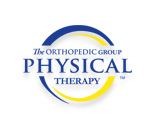A Total Knee Arthroplasty is done to the knee joint when it is experiencing severe pain and also in order to restore function. Most people who have total knee replacement surgery have advanced arthritis. During the surgery, damaged cartilage and bone are cut away from the femur(thigh bone), tibia(shin bone), and patella(knee cap). These are then replaced with an artificial joint made of metal and plastics. The procedure requires an incision usually between 3-5 inches. Since the incision is a minimal length, the quadriceps muscle produces a stronger contraction. After surgery, physical therapy treatment begins. The focus of treatment is first on decreasing inflammation, allowing tissues to heal properly, minimizing muscle atrophy(decrease or loss of muscle), and regaining range of motion. For normal daily activities, knee flexion requires at least 90 degrees and 105 degrees to get up from a sitting position. Right after surgery, a bulky dressing is placed around the knee and a drain to remove any fluid that has built up around the knee. The drain will come off in one to two days. The day after surgery a person may be able to begin using a CPM(continuous passive motion) machine. The CPM machine will slowly straighten and bend the knee. Therapeutic exercise will begin initially at physical therapy include ankle pumps, gluteal sets, quadriceps sets, assistive device training, use of CPM machine, and active range of motion within the available range. As a person progresses, the therapy moves on to regaining endurance, full strength, and independence. Finally, the advanced activities of therapy include stationary cycling, step-ups, wall squats, and treadmill walking. The average short-term recovery time is 6-12 weeks. However, long-term recovery consists of 3-6 months. Recovery time may vary between patients.
